Seven days had elapsed since my last visit to Harbridge. The same place maybe but the weather can place a completely different aspect and ambience to an area. So it was this week
Chris and I were using it as a starting place once again with visions of different destinations to last week given the more favourable forecast from the damp squib that was last Saturday, where we had to take shelter in the hides on Ibsley Water.
I had left home just before sunrise, the sky was clear which gave me lots of hope for some good views of the Bewick swan we had missed out on the week before and some decent weather through the day.
I arrived a little later than last week. Chris was already here. Being a river valley the mist on a clear morning had rolled in like a blanket, so visibility was poor to say the least.
The sun which had been so prominent for the sunrise 7 days ago struggled to burn through the mist, providing an eerie silent backdrop.
A Song Thrush was ever present, it's stuttering tuneful song burst through the gloom even though it was difficult to pick out by the church.
We passed the church and towards the farm lane bordered by fields. Last week Mute Swan were easy to pick out grazing in the fields. Today was impossible, so we settled for the only thing we could focus on, the milky sun as it rose above the trees.
It reminded me of a Turner watercolour.
I took similar positioned shots as of last week. The difference in vista was stark but just as interesting.
Through the grey I picked out a dark shape on the ground. A Buzzard.
It could be picking out all sorts of carrion. Either dead or alive. It seemed to be on the case of a rodent but in the limited visibility it was impossible to make out for sure. There were a few carcasses of swan here so it must be a place for an easy meal. The swans hit the overhead powerlines as they fly in the dark. It must be a painful death but they give life to others.
The further we moved along the lane towards the farm the more the mist receded but painfully slowly. Another Song Thrush performed it's vocal acrobatics as we passed by.
Being a farm, many wild animals congregate around it. Rooks and Jackdaws gathered on the lines above us.
It always strikes me as strange that these corvids associate with one another, where Carrion Crows do not.
The farm buildings are great places for House Sparrows to make home.
Pied Wagtail call this home too. In Spring they find the corrugated roof a great place to nest. In winter, to roost...
Viewing through the farm buildings I noticed an unusual tree with black leaves adorning. Starlings were using it as a perching stage. A quite bizarre sight in the mist.
The trees lining the road gave clearer views in the rising sunlight. I love the textures against the bark in the rising light.
The road ascended past the farm where we turned and headed back. A well worn path across the field gave away a Fox and Badger road.
The Starlings still roosted in the tree. Later that evening Chris would contact me saying in the top right corner he spotted a Kestrel of all things. As he rightly pointed out, keep your friends close and your enemies closer! The Starlings seemed unconcerned.
The sun was starting to makes it's impact as Chris led the way back down the track.
We watched the Mute Swans fly in from all directions through the mist. Some would swerve abruptly trying to avoid the power cables.
As the sun burnt off the mist the Swans would become more apparent.
In the foreground, although not obvious here, Fieldfare and Redwing fed for invertebrates on the soft earth.
At the church is was as though all was normal. Blue sky began to take precedence.
Wrens abounded, chattered their sub spring song and scolded us as we dared to pass their territory. One even let us know of it's presence by perching high, and displaying, giving it's self assured bobbing action like the click-click motion of the dice in the game of Frustration as it raised it's tail !
Stonechat flitted around feeding but refused such a close contact as the Wren.
We passed our vehicles and walked a little further to the bridge that spans the Avon. The mist was still lifting from the cooler water.
Yet more Wren let us know they were top dog here.
The view up river was cool and calm. I could see a few Tufted Duck and Little Grebe as they dived below the surface searching for food.
Second week, twice unlucky with a sight of the Bewick. What you hope to see and what you manage to see are usually completely different, which makes it all the more compelling when outside observing nature. As I've always said, if you want a guarantee, go to a Zoo. The natural world is always the number one in my book, it delivers the unexpected. The day rarely contains my initial thoughts of how it would pan out.
Next stop, a brief tour of the hides on Ibsley Water and my goodness, what a contrast to last week, apart from the absence of people in the first Tern Hide.
As we opened the up and over windows of the hide, peace and tranquility pervaded across the lake and filled the empty space we inhabited.
Every creature seemed to be relaxed and chilled out across the whole expanse of calm water. The mist had lifted, giving a soft glow as the sun took over.
Several species of duck drifted aimlessly about. Pochard, Tufted, Wigeon, Teal, Mallard, Gadwall, with a sprinkling of Grebes and Gulls and Geese.
At the Goosander Hide, there were a few distant of the aforementioned bird but only a few duck and Canada Geese slipped past near us. Nothing seemed bothered about doing much at all which I found quite relaxing. There's something about a sunny day that brings out a more joyful sense of being alive. It seems to pervade through all living things, including me.
The last hide, as per last week, was the Lapwing hide, none of the aforementioned bird from here however but as in keeping with sunny days, suddenly it can bring out the extremely joyous at times.
A pair of beautiful Goldeneye could be seen quite close in. The female was playing submissive. At first the male played hard to get, diving away several times.
Only to return and posture before her.
She was constantly low on the water.
The male still played it cool...
and then started teasing again...
As we sat enthralled at their mating ritual, the male suddenly grabbed the still submissive female by the neck almost submerging her..
After what must have been a brief thrashing of the water lasting about 15 seconds, he let go..
They immediately swam in opposite directions with heads held high as if proud of their coupling.
A little early for breeding perhaps but maybe they were just practicing for a few weeks time, a bonding process until the real thing? Spring had arrived rather early...
After that piece of mating ballet, a new pair of partners made their presence known.
Oystercatchers. And boy are they noisy. They just do noisy with a high pitched piping that builds to a crescendo.
This pair were moving around in tandem, either in flight or on the shore.
That was until after much kerfuffle and mimicking, the male hopped on top!
One day of sun seemed to bring out the need to procreate amongst the local population and we weren't done yet.
Walking back from the Lapwing hide, the place is interspersed with several lakes of varying sizes all around. Some are empty, others have the odd bit of activity. One had some Little Grebe and Mallard plus some Moorhen displaying too. The weather was definitely going to their heads.
Back at the car park, a Song Thrush serenaded us as we got ready to set off for Milkham Inclosure, deep into the New Forest.
Milkham had thrown up sightings of the Great Grey Shrike, so, as it was en route, we decided on a pit stop there.
Milkham is a wide expanse of undulating moorland with trees at it's centre.
Try as we might the Shrike remained hidden. We did accidentally disturb a Woodcock as we walked through the forest. A woodland specialist, this camouflaged wader - with a long bill for digging deep into the earth for food- gave us the view we normally expect, it's rear end as it flies off in alarm.
There was little to see at Milkham apart from the Woodcock and a Stock Dove plus what was left behind from some human activity that Chris found as we walked through the scrub.
It turns out that this is a common place for people to meet up after hours shall we say? It wasn't just the birds that were getting frisky in the brighter weather!
Eyeworth Pondwas next on our list. This a man made lake bordered on two sides by forest which reaches down to it's shore.
It has a resident population of Mandarin Duck.
The pond was created in 1871 by damming Latchmore Brook to supply water to a nearby gun powder factory which employed up to 100 people. It closed in 1921. The pond remains and apart from the Mandarin, can be a great place to get close to Goosander, Kingfisher and occasionally the rare Wood Duck. An introduced species like the Mandarin.
The woodland birds are well fed here and it's easy to get close to them.
Marsh Tits..
Coal Tits...
Nuthatches...
More Marsh Tits..
The male Mandarin came in closer.
There were several male and female here. They prefer woodland edged lakes such as here and Virginia Water Lake where I used to see them as a child.
Most of them kept hidden in amongst the tree lined edges and on the small wooded island.
The ubiquitous Blue Tits made the most of the scraps.
A small but worthwhile little detour as always, from Eyeworth we headed for our final destination of the day after much deliberation as the cloud was closing in, along with the time.
A favourite place and always worth a visit no matter what time of year. Acres Down.
Chris had put forward the argument to see Goshawks flying over the forest from the viewpoint. I thought it too early in the year but he assured me this would be a good time.
How right he was. No sooner had we reached the apex of the hill, set up our telescopes to scan the view before us that we picked up a pair circling on the thermals in the distance.
They gradually drifted towards us, almost above our heads, calling occasionally as the glided above us. One day I would love a closer contact with one. They are such specialist forest birds that keep away from decent views unless you are very lucky. Distant views like this are much easier but don't get to the real essence of the raptor. Once almost extinct in this country. They have made a miraculous recovery.
After getting a lucky break like this we decided on a circular walk back to the car park.
We had heard Lesser Spotted Woodpecker in the valley and searched in vain for them. I had seen them here last year. This once common bird has declined rapidly. Places such as this are the best place to find them these days. We dipped out today, but we shall return...
The New Forest is always a wonderful place to visit. So many different places that can throw up some fascinating sights all year round. The history of the area is a goldmine too. One I hope to touch on more in the coming months.
Chris and I bode each other farewell until the next time.
A few days later, I was working from home in the workshop in our garden. Just before the blizzard hit from the East, I was fortunate enough to get a sighting of our own 'Mini Goshawk'
This is the closest looking bird to the forest inhabitant. The Sparrowhawk.
I had heard the alarm call rise up from the Sparrows in the hedge. I knew there was a raptor around and that usually meant Sparrowhawk!
Birds have different calls for different threats. I've learned the call of a raptor, so I tip toed out the workshop door, scanning the area slowly. I caught it perched in the plum tree opposite. It was a female. I was in a quandary however. I was wanting to admire this wonderful killing machine and take a photo at the same time. My camera was in the house and if I walked across the decking to get it, I would frighten it off for sure, so I stayed put.
The Sparrows were hunkered down out of sight. A couple of times the Hawk would dart around the trees and shrubs in a vain attempt to capture an unwary bird. The acceleration and agility of this raptor was breathtaking.
I watched it stalk it's prey too. It would hop into the ivy and crawl through trying to flush out a victim. It accomplished this and tried again in vain to capture the escapee.
One time when it hid in the foliage I took the opportunity to scamper in for my camera and retreated to the workshop. Thankfully it stayed and gave me some great photos as it scanned the garden for a meal.
I watched it for a good 20 minutes, totally enthralled and excited from it's behaviour and beauty..
After capturing it mid defecation it sped off a few seconds later. What an incredible encounter, I was so lucky. Now for the Goshawk at this distance....
The title of this post is a line taken from the poem.. 'The Early Spring' by Tushar Ray
Chris and I were using it as a starting place once again with visions of different destinations to last week given the more favourable forecast from the damp squib that was last Saturday, where we had to take shelter in the hides on Ibsley Water.
I had left home just before sunrise, the sky was clear which gave me lots of hope for some good views of the Bewick swan we had missed out on the week before and some decent weather through the day.
I arrived a little later than last week. Chris was already here. Being a river valley the mist on a clear morning had rolled in like a blanket, so visibility was poor to say the least.
The sun which had been so prominent for the sunrise 7 days ago struggled to burn through the mist, providing an eerie silent backdrop.
A Song Thrush was ever present, it's stuttering tuneful song burst through the gloom even though it was difficult to pick out by the church.
We passed the church and towards the farm lane bordered by fields. Last week Mute Swan were easy to pick out grazing in the fields. Today was impossible, so we settled for the only thing we could focus on, the milky sun as it rose above the trees.
It reminded me of a Turner watercolour.
I took similar positioned shots as of last week. The difference in vista was stark but just as interesting.
Through the grey I picked out a dark shape on the ground. A Buzzard.
It could be picking out all sorts of carrion. Either dead or alive. It seemed to be on the case of a rodent but in the limited visibility it was impossible to make out for sure. There were a few carcasses of swan here so it must be a place for an easy meal. The swans hit the overhead powerlines as they fly in the dark. It must be a painful death but they give life to others.
The further we moved along the lane towards the farm the more the mist receded but painfully slowly. Another Song Thrush performed it's vocal acrobatics as we passed by.
Being a farm, many wild animals congregate around it. Rooks and Jackdaws gathered on the lines above us.
It always strikes me as strange that these corvids associate with one another, where Carrion Crows do not.
The farm buildings are great places for House Sparrows to make home.
Pied Wagtail call this home too. In Spring they find the corrugated roof a great place to nest. In winter, to roost...
Viewing through the farm buildings I noticed an unusual tree with black leaves adorning. Starlings were using it as a perching stage. A quite bizarre sight in the mist.
The trees lining the road gave clearer views in the rising sunlight. I love the textures against the bark in the rising light.
The road ascended past the farm where we turned and headed back. A well worn path across the field gave away a Fox and Badger road.
The Starlings still roosted in the tree. Later that evening Chris would contact me saying in the top right corner he spotted a Kestrel of all things. As he rightly pointed out, keep your friends close and your enemies closer! The Starlings seemed unconcerned.
The sun was starting to makes it's impact as Chris led the way back down the track.
We watched the Mute Swans fly in from all directions through the mist. Some would swerve abruptly trying to avoid the power cables.
As the sun burnt off the mist the Swans would become more apparent.
In the foreground, although not obvious here, Fieldfare and Redwing fed for invertebrates on the soft earth.
At the church is was as though all was normal. Blue sky began to take precedence.
Wrens abounded, chattered their sub spring song and scolded us as we dared to pass their territory. One even let us know of it's presence by perching high, and displaying, giving it's self assured bobbing action like the click-click motion of the dice in the game of Frustration as it raised it's tail !
Stonechat flitted around feeding but refused such a close contact as the Wren.
We passed our vehicles and walked a little further to the bridge that spans the Avon. The mist was still lifting from the cooler water.
Yet more Wren let us know they were top dog here.
The view up river was cool and calm. I could see a few Tufted Duck and Little Grebe as they dived below the surface searching for food.
Second week, twice unlucky with a sight of the Bewick. What you hope to see and what you manage to see are usually completely different, which makes it all the more compelling when outside observing nature. As I've always said, if you want a guarantee, go to a Zoo. The natural world is always the number one in my book, it delivers the unexpected. The day rarely contains my initial thoughts of how it would pan out.
Next stop, a brief tour of the hides on Ibsley Water and my goodness, what a contrast to last week, apart from the absence of people in the first Tern Hide.
As we opened the up and over windows of the hide, peace and tranquility pervaded across the lake and filled the empty space we inhabited.
Every creature seemed to be relaxed and chilled out across the whole expanse of calm water. The mist had lifted, giving a soft glow as the sun took over.
Several species of duck drifted aimlessly about. Pochard, Tufted, Wigeon, Teal, Mallard, Gadwall, with a sprinkling of Grebes and Gulls and Geese.
At the Goosander Hide, there were a few distant of the aforementioned bird but only a few duck and Canada Geese slipped past near us. Nothing seemed bothered about doing much at all which I found quite relaxing. There's something about a sunny day that brings out a more joyful sense of being alive. It seems to pervade through all living things, including me.
The last hide, as per last week, was the Lapwing hide, none of the aforementioned bird from here however but as in keeping with sunny days, suddenly it can bring out the extremely joyous at times.
A pair of beautiful Goldeneye could be seen quite close in. The female was playing submissive. At first the male played hard to get, diving away several times.
Only to return and posture before her.
She was constantly low on the water.
The male still played it cool...
and then started teasing again...
As we sat enthralled at their mating ritual, the male suddenly grabbed the still submissive female by the neck almost submerging her..
After what must have been a brief thrashing of the water lasting about 15 seconds, he let go..
They immediately swam in opposite directions with heads held high as if proud of their coupling.
A little early for breeding perhaps but maybe they were just practicing for a few weeks time, a bonding process until the real thing? Spring had arrived rather early...
After that piece of mating ballet, a new pair of partners made their presence known.
Oystercatchers. And boy are they noisy. They just do noisy with a high pitched piping that builds to a crescendo.
This pair were moving around in tandem, either in flight or on the shore.
That was until after much kerfuffle and mimicking, the male hopped on top!
One day of sun seemed to bring out the need to procreate amongst the local population and we weren't done yet.
Walking back from the Lapwing hide, the place is interspersed with several lakes of varying sizes all around. Some are empty, others have the odd bit of activity. One had some Little Grebe and Mallard plus some Moorhen displaying too. The weather was definitely going to their heads.
Back at the car park, a Song Thrush serenaded us as we got ready to set off for Milkham Inclosure, deep into the New Forest.
Milkham had thrown up sightings of the Great Grey Shrike, so, as it was en route, we decided on a pit stop there.
Milkham is a wide expanse of undulating moorland with trees at it's centre.
Try as we might the Shrike remained hidden. We did accidentally disturb a Woodcock as we walked through the forest. A woodland specialist, this camouflaged wader - with a long bill for digging deep into the earth for food- gave us the view we normally expect, it's rear end as it flies off in alarm.
There was little to see at Milkham apart from the Woodcock and a Stock Dove plus what was left behind from some human activity that Chris found as we walked through the scrub.
It turns out that this is a common place for people to meet up after hours shall we say? It wasn't just the birds that were getting frisky in the brighter weather!
Eyeworth Pondwas next on our list. This a man made lake bordered on two sides by forest which reaches down to it's shore.
It has a resident population of Mandarin Duck.
The pond was created in 1871 by damming Latchmore Brook to supply water to a nearby gun powder factory which employed up to 100 people. It closed in 1921. The pond remains and apart from the Mandarin, can be a great place to get close to Goosander, Kingfisher and occasionally the rare Wood Duck. An introduced species like the Mandarin.
The woodland birds are well fed here and it's easy to get close to them.
Marsh Tits..
Coal Tits...
Nuthatches...
More Marsh Tits..
The male Mandarin came in closer.
There were several male and female here. They prefer woodland edged lakes such as here and Virginia Water Lake where I used to see them as a child.
Most of them kept hidden in amongst the tree lined edges and on the small wooded island.
The ubiquitous Blue Tits made the most of the scraps.
A small but worthwhile little detour as always, from Eyeworth we headed for our final destination of the day after much deliberation as the cloud was closing in, along with the time.
A favourite place and always worth a visit no matter what time of year. Acres Down.
Chris had put forward the argument to see Goshawks flying over the forest from the viewpoint. I thought it too early in the year but he assured me this would be a good time.
How right he was. No sooner had we reached the apex of the hill, set up our telescopes to scan the view before us that we picked up a pair circling on the thermals in the distance.
They gradually drifted towards us, almost above our heads, calling occasionally as the glided above us. One day I would love a closer contact with one. They are such specialist forest birds that keep away from decent views unless you are very lucky. Distant views like this are much easier but don't get to the real essence of the raptor. Once almost extinct in this country. They have made a miraculous recovery.
After getting a lucky break like this we decided on a circular walk back to the car park.
We had heard Lesser Spotted Woodpecker in the valley and searched in vain for them. I had seen them here last year. This once common bird has declined rapidly. Places such as this are the best place to find them these days. We dipped out today, but we shall return...
The New Forest is always a wonderful place to visit. So many different places that can throw up some fascinating sights all year round. The history of the area is a goldmine too. One I hope to touch on more in the coming months.
Chris and I bode each other farewell until the next time.
A few days later, I was working from home in the workshop in our garden. Just before the blizzard hit from the East, I was fortunate enough to get a sighting of our own 'Mini Goshawk'
This is the closest looking bird to the forest inhabitant. The Sparrowhawk.
I had heard the alarm call rise up from the Sparrows in the hedge. I knew there was a raptor around and that usually meant Sparrowhawk!
Birds have different calls for different threats. I've learned the call of a raptor, so I tip toed out the workshop door, scanning the area slowly. I caught it perched in the plum tree opposite. It was a female. I was in a quandary however. I was wanting to admire this wonderful killing machine and take a photo at the same time. My camera was in the house and if I walked across the decking to get it, I would frighten it off for sure, so I stayed put.
I watched it stalk it's prey too. It would hop into the ivy and crawl through trying to flush out a victim. It accomplished this and tried again in vain to capture the escapee.
One time when it hid in the foliage I took the opportunity to scamper in for my camera and retreated to the workshop. Thankfully it stayed and gave me some great photos as it scanned the garden for a meal.
I watched it for a good 20 minutes, totally enthralled and excited from it's behaviour and beauty..
After capturing it mid defecation it sped off a few seconds later. What an incredible encounter, I was so lucky. Now for the Goshawk at this distance....



















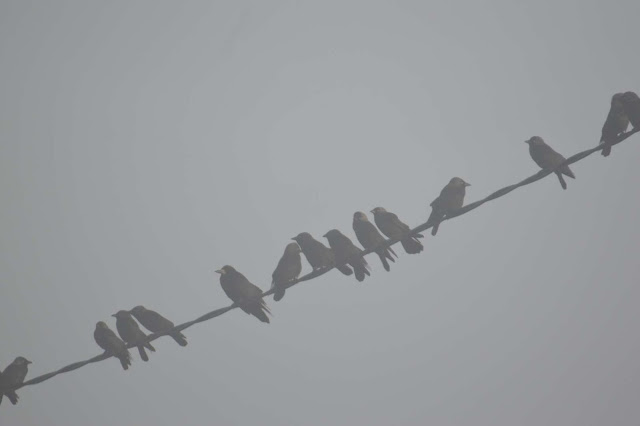
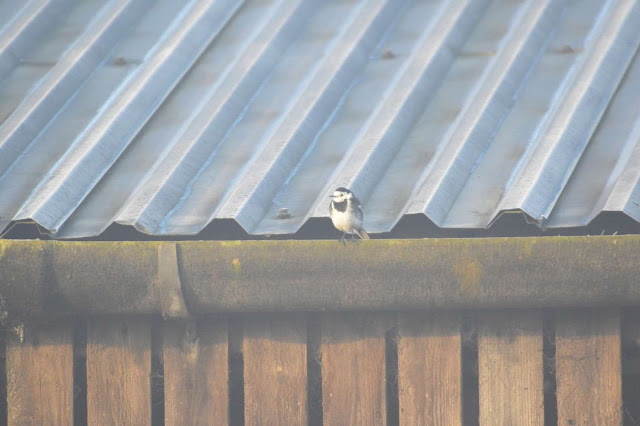






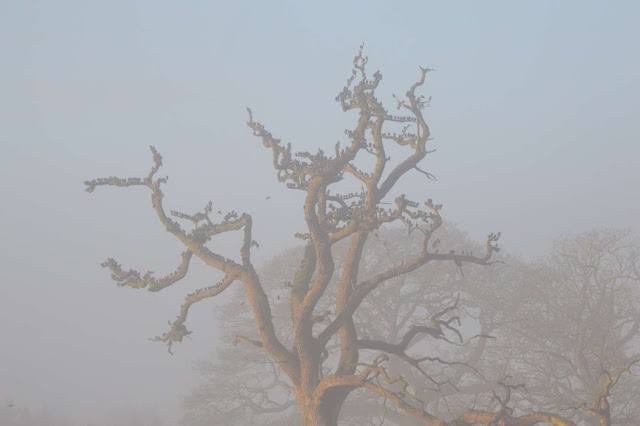












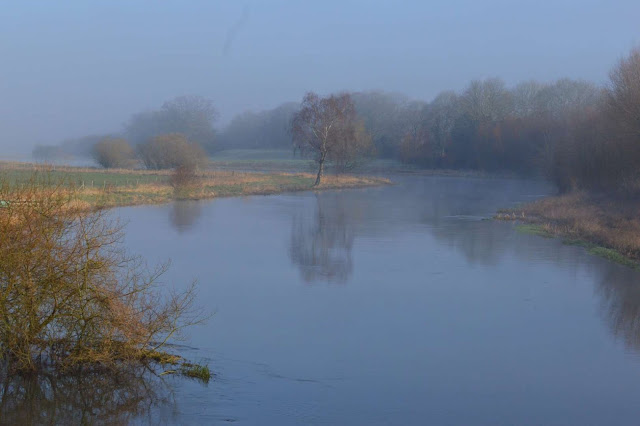























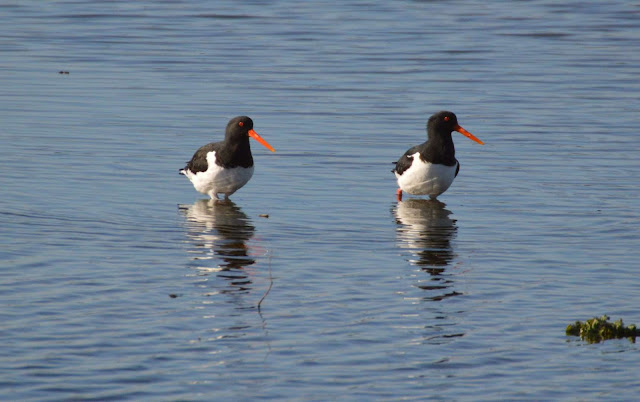








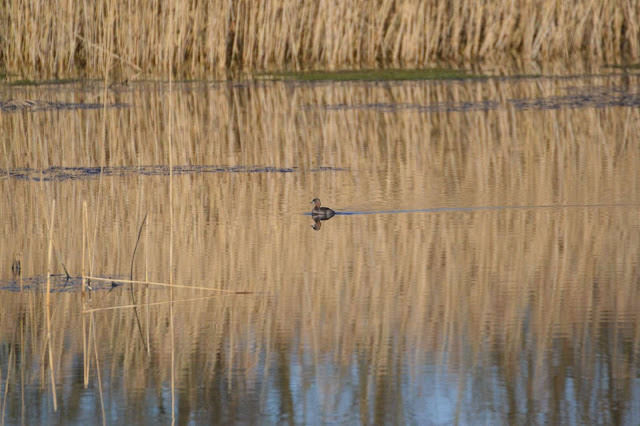




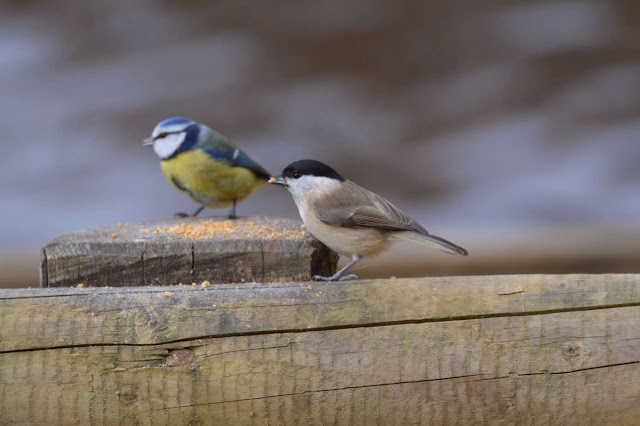
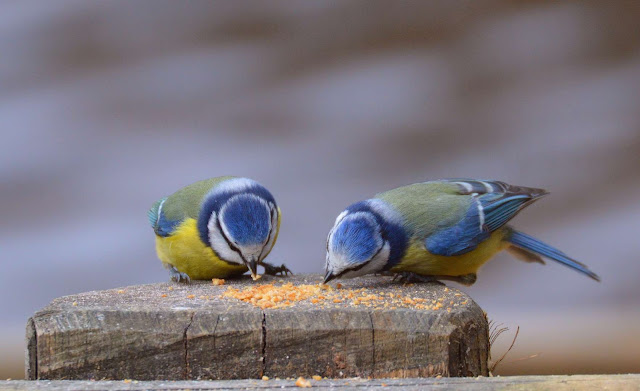









































No comments:
Post a Comment
Please leave me a message if you would like to do so.